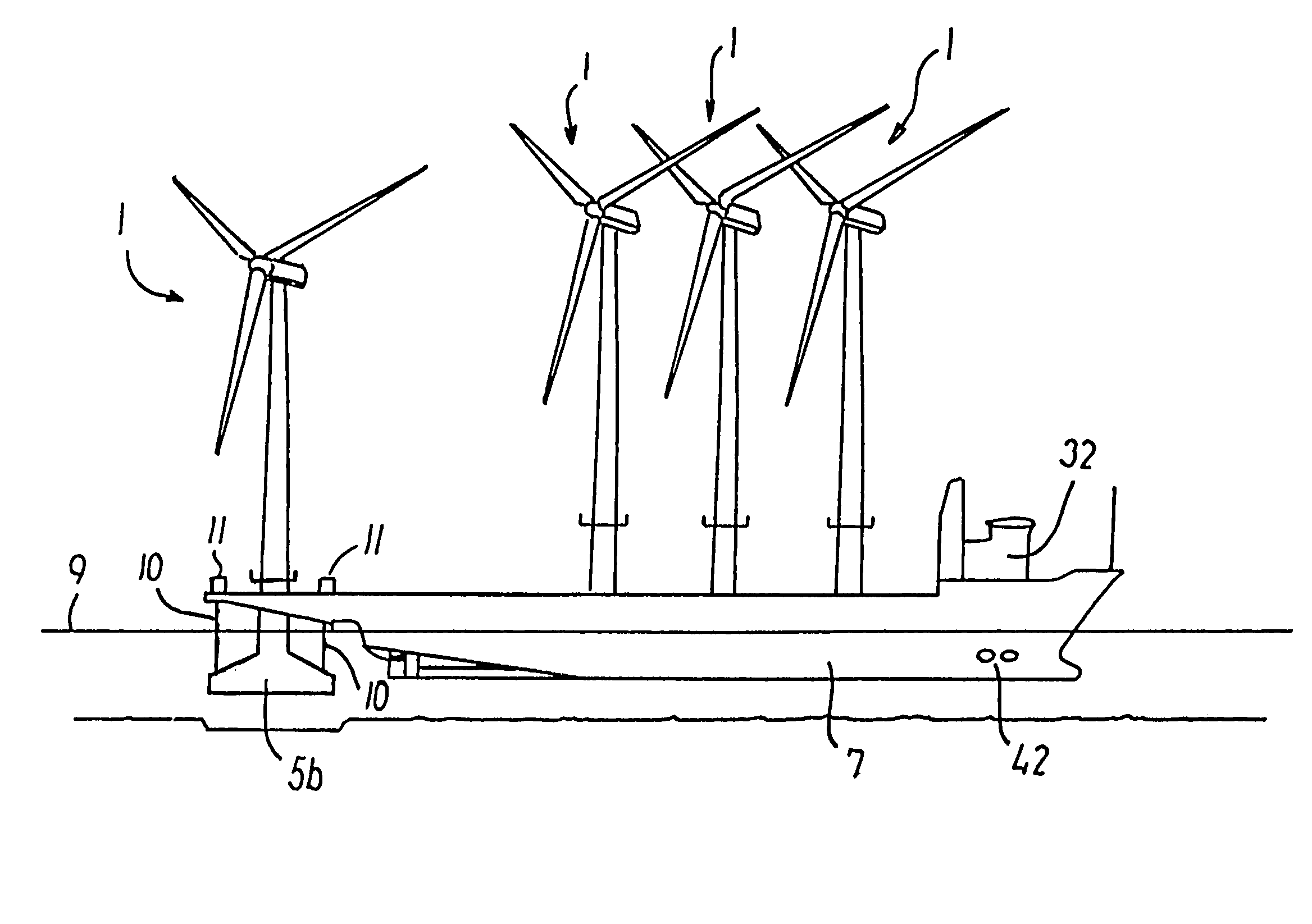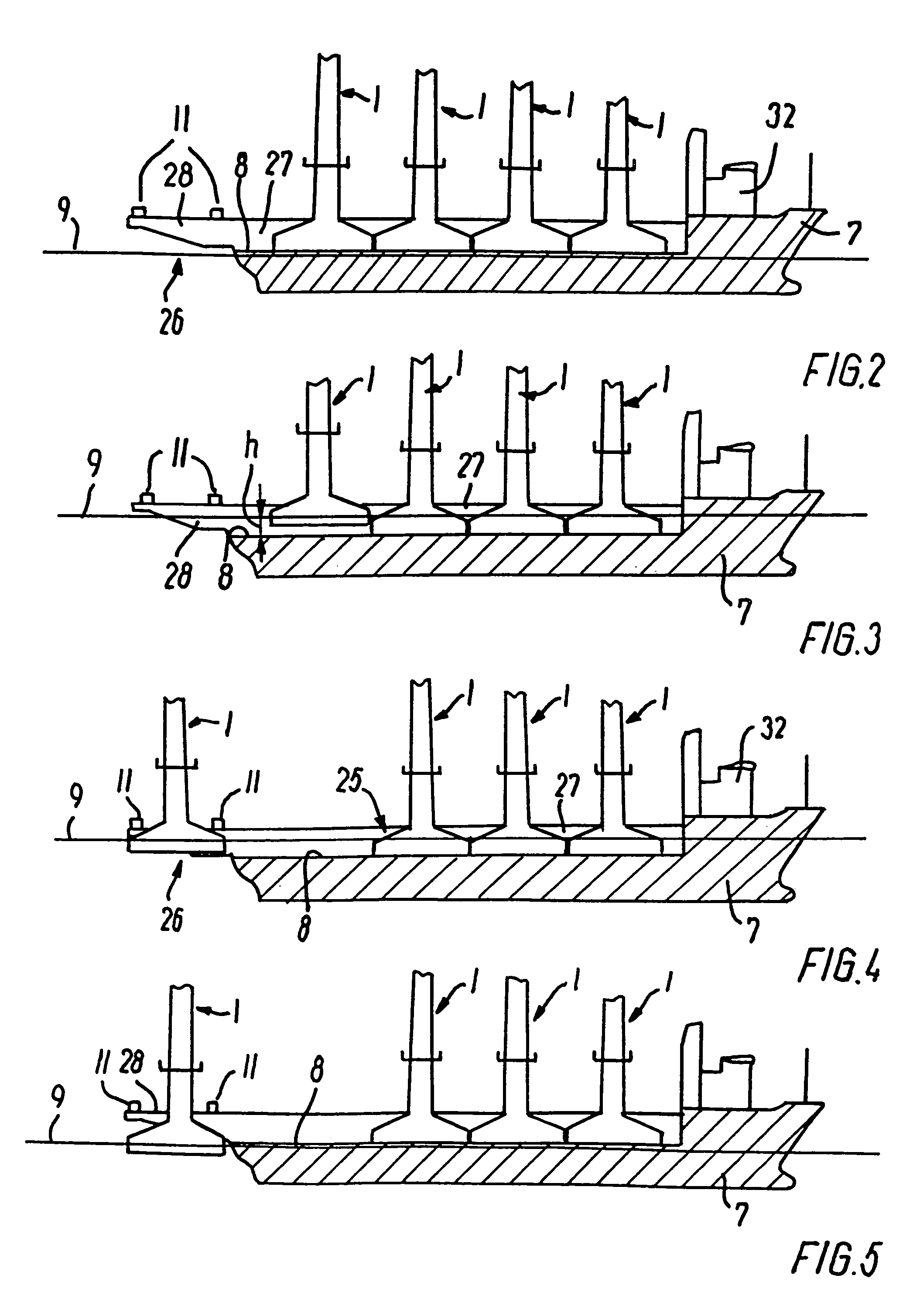Vessel for transporting wind turbines, methods of moving a wind turbine, and a wind turbine for an off-shore wind farm
a technology for wind turbines and ships, applied in the direction of caissons, floating buildings, artificial islands, etc., can solve the problems of high operating costs of vessels with cranes for lifting about 1000 t, risky lifting of large structures, and no simple task to sail, so as to reduce the risk of damage to the wind turbine and ensure the delivery of the wind turbine.
- Summary
- Abstract
- Description
- Claims
- Application Information
AI Technical Summary
Benefits of technology
Problems solved by technology
Method used
Image
Examples
Embodiment Construction
[0052]As shown in FIG. 1, a wind turbine 1 has a number of rotor blades 2, typically two or three, mounted on a nacelle 3 at the top of a tower 4 mounted on a wind turbine base 5. The wind turbine tower, nacelle and rotor blades may be of any suitable design and may, for example, be a 2 MW turbine of one of the makes of Vestas Wind Systems A / S, Bonus Energy A / S or NEG Micon A / S. Such a wind turbine typically has a height from the bottom of the base to the top of the nacelle of 90–100 m and a blade length of about 40 m.
[0053]Offshore wind turbines may have larger dimensions than as mentioned, such as outputs of 3 MW, 4 MW or 5 MW or more with heights of 100–140 m and rotor blade lengths of 45–80 m. Normally, wind turbines of dimensions below 1 MW are not usable.
[0054]The design of the actual tower with nacelle and rotor blades is extremely well-known. The rotor blades 2 are mounted on a rotor in a wind turbine, which, in the nacelle housing, is mounted on a base plate and is connecte...
PUM
 Login to View More
Login to View More Abstract
Description
Claims
Application Information
 Login to View More
Login to View More - R&D
- Intellectual Property
- Life Sciences
- Materials
- Tech Scout
- Unparalleled Data Quality
- Higher Quality Content
- 60% Fewer Hallucinations
Browse by: Latest US Patents, China's latest patents, Technical Efficacy Thesaurus, Application Domain, Technology Topic, Popular Technical Reports.
© 2025 PatSnap. All rights reserved.Legal|Privacy policy|Modern Slavery Act Transparency Statement|Sitemap|About US| Contact US: help@patsnap.com



